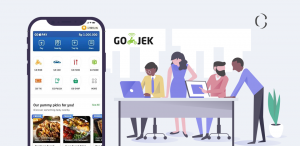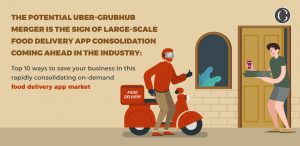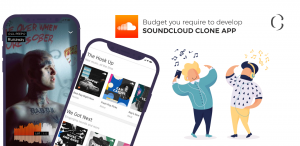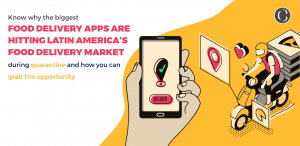A step-by-step guide to build an on-demand food delivery app to grab the business opportunity created by the coronavirus outbreak in the on-demand app market

Unless you are living in the safe bombproof military bunker, you must have heard and read a lot on how coronavirus is bringing the global economy on its knees. Though governments of all countries are working ceaselessly to rescue the global economy from the coronavirus outbreak, different industries are losing a heap of money with every passing day. According to a report by the UN Conference on Trade and Development, the global economy may see an impact of $1-2 trillion due to coronavirus outbreak. And the fact that the coronavirus vaccine won’t be market-ready before Christmas 2020 also influences the performance of the market severely.
However, the coronavirus outbreak has opened up many windows of opportunities for the on-demand food delivery industry. With government authorities imposing rules to shut down cafes and restaurants, people are opting more for on-demand food delivery apps. According to CNBC, Grab’s food delivery business in Singapore has increased by 20% in the last few days as people do not prefer to go out during coronavirus outbreak.
However, not putting delivery workers and customers in direct physical contact has later emerged as the challenge. But delivery companies like Postmates have found the way to deal with that challenge by introducing a few more features in their delivery apps.
Postmates on 6th March 2020 has added a new feature in its app and initiated ‘non-contact’ delivery. The major ambition behind the introduction of ‘non-contact’ delivery was reducing the spread of the coronavirus when its contract workers are delivering ordered meals.
To actualize the ‘non-contact’ delivery, Postmates has added a new feature called Drop Off options which facilitates users to specify how they would like to receive the delivery.
Not only Postmates but Chinese food delivery platform Meituan Dianping has also introduced the same ‘non-contact’ delivery, according to Bloomberg.
So, if you also want to leverage this opportunity created by the coronavirus outbreak in the on-demand food delivery market by developing an on-demand food delivery app, you should consider extra features to deliver the food packages that are coronavirus-free.
In this blog, we will discuss the profitable and result-oriented ways to develop and run an on-demand food delivery business amid the coronavirus outbreak. We will also discuss the steps you can take to deal with any other healthcare and economic crisis in the future. But before all of these, let’s first discuss the basics of the on-demand food delivery app and business.
The on-demand food delivery business basics you should know to move advance
- The on-demand food delivery app is one of the three types of food delivery apps. These types of food delivery apps include an app for takeaways, an on-demand app for your own restaurant chain with your own delivery drivers, and an on-demand app for others’ restaurants with your delivery drivers. Among all of these, the on-demand app for others’ restaurants with your delivery drivers is the most profitable type of on-demand food delivery apps.
- You should opt for the gig economy model rather than hiring own delivery staff to reduce operating costs and resources by more than 30%.
- A single on-demand food delivery app consists of two different apps with different features for drivers and users. A dashboard for admin is also part of the on-demand food delivery app.
- On-demand food delivery apps are making a huge sum of profit by introducing premium services, taking a commission on every order from listed restaurants, enabling restaurants to give the ads by paying money, taking a rating-based commission, and giving its online space to other companies for ads.
- Top on-demand food delivery apps are offering remarkable discounts on every order to build a strong user base. But they add distance fees if the delivery distance is higher than 3-4 kilometers.
- Aligning supply (availability of drivers) with the demand (food orders placed by users) is the major challenge all on-demand food delivery businesses are facing. However, companies have started using AI technology to predict the demand and satisfy it more effectively.
- To encourage delivery drivers to serve in areas where demand is high, food delivery companies offer them a boost in their per delivery earning. They apply the same strategy even when it is raining as the number of food orders rises significantly during rainy weather.
- Big food delivery companies form many dedicated teams and build centers to process applications of delivery drivers, distribute food delivery bags, and solve any query of the delivery drivers.
- Food delivery apps track the speed of the delivery driver while he is delivering to make sure that the driver with the ‘bicycle delivery account’ is not using a car to deliver food.
- Almost all companies deposit weekly earnings of drivers and restaurants in their bank accounts on a fixed day of a week. Whereas, a few companies let drivers and restaurant owners claim their earned money any day, any time.
- All on-demand food delivery businesses are promoting transparency with an extensive rating system – delivery drivers, restaurant owners, and users can rate each other.

So, now when you know the basics of the food delivery app, let’s move ahead and discuss advance – how to build an on-demand food delivery app during the coronavirus outbreak to leverage the high demand.
The advance – how to build an on-demand food delivery app during the coronavirus outbreak?
Following is the step-by-step guide to plan, develop, and deploy an on-demand food delivery app during a pandemic.
Step 1:
Do not aim to just develop an on-demand food delivery app to earn money from it during a coronavirus outbreak. Instead, focus on long-term goals and use the surge created by the coronavirus outbreak in the on-demand industry to build a strong initial user base.
This means the first step should be all about defining your short-term and long-term requirements & goals and drafting the business plan. Your business plan must include everything from locations, business models, targeted users, app feature set, marketing campaigns, and legal concerns.
Here, you should also identify the ways to ensure the virus-free food package delivery.
Step 2:
Approach an on-demand food delivery app development company, carefully!
Amid the rising fear of coronavirus, different countries are locking down the cities and asking companies to shut down their offices or implement work-from-home policy. So, if you end up outsourcing your project to the app development company of the highly affected country, you will not get excellent output and on-time app delivery.
Moreover, you should also take app development and the delivery time into account as you only have a time window of 60 – 80 days to launch the food delivery app. If you miss this time window, you will miss the business opportunity created by a coronavirus.
Step 3:
After you approach an on-demand app development company, share your business plan or business requirements so that their team of business experts can validate your idea and identify the scope.
Since consultation from experts plays a crucial role, talk to their business experts proactively and discuss everything from the business model, app design, feature set, legality, and marketing campaigns.
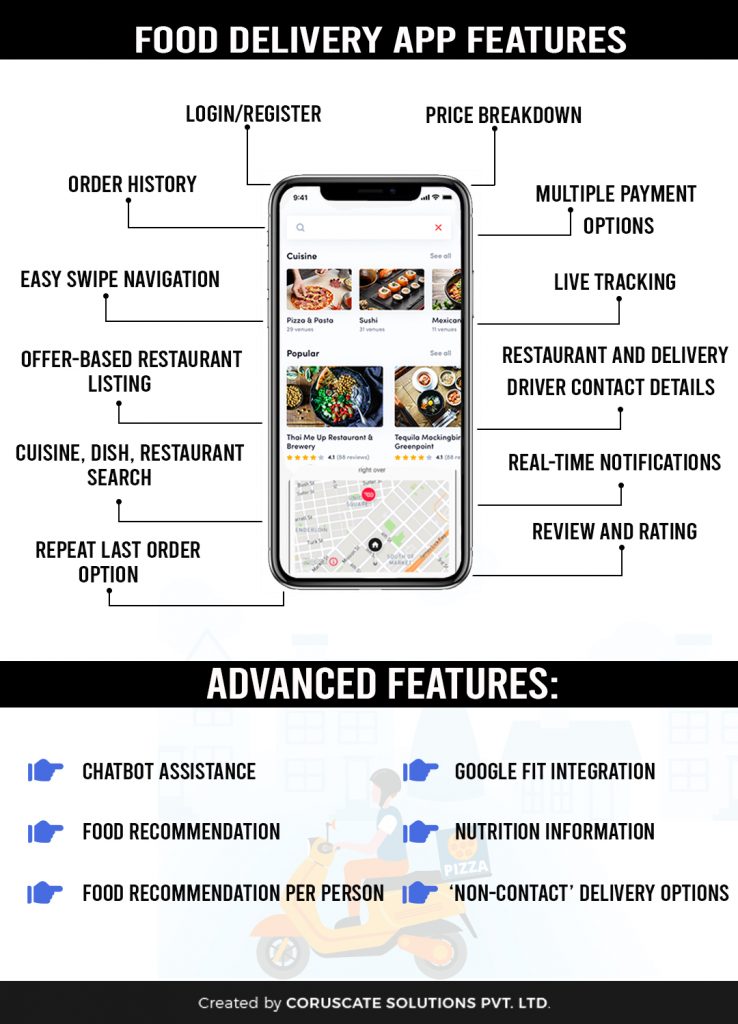
Step 4:
Most of the app development companies give you an update on the ongoing app development process daily or weekly. So, whenever they give you the update or show you the basic design and working of the app, do not turn blind eye to it. Ask them straightaway to change the design or feature if you do not like it.
Moreover, keep an eagle eye on the coronavirus outbreak and with the evolving scenario, make necessary changes in your app features, business model, and marketing campaign. After all, you have to utilize the business opportunity created by the coronavirus outbreak to give an initial boost to your food delivery business.
Step 5:
At last, when your hired app development company delivers you the developed app, make sure it does not have any bugs. Because if there are many bugs in your app and you deploy it without solving them, it affects the user experience. And if your IT partner solves those bugs, it delays the app deployment. Meaning, none of the options is helping you here, except a bug-free app straight from the app development company!
Step 6:
When it comes to running the marketing campaign, be very precise. Do not promote all of your app features. Instead, identify the 2-3 most unique features which can attract more users amid coronavirus outbreak and promote those features only.
Moreover, focus on short-term goals, try to build an initial user base, and do not pay much heed to long-term goals as of now. For instance, you should focus on ‘non-contact’ delivery as it is trending right now rather than focusing on any other common features of the mobile app.
The future – how to sustain the on-demand food delivery app?
The coronavirus isn’t going to stay here forever. But your app will! Thus, it is a vitally important step to adopt the new changes of the on-demand app market in the upcoming future. If you fail to put your app parallel to the market changes, your app won’t simply survive long.
The following are the top two ways to sustain the on-demand food delivery app.
- First of all, you should understand the fact that on-demand app development isn’t the one time process. With every new trend and market change, you have to update your app by adding new features. Not only this, but you have to change the feature set of your on-demand app when you introduce a new business model. Thus, you should always hire an on-demand app development company that stands beside you as long as you continue running your food delivery business. Having an on-demand food delivery company always ready for you makes you act quickly to the market change. They make you seize the new business opportunity way before your competitors.
- Your goals should not be limited to build an initial user base. You should also work on the strategies to keep those initial users into your business sales life cycle even after the end of the coronavirus outbreak. For that, you have to promote transparency, solve their queries quickly, offer remarkable user experience, understand their requirements, and level up the feature set.
How much does it cost to build an on-demand food delivery app to deliver food amid the coronavirus outbreak?
Coruscate is the top on-demand app development company that has developed many on-demand apps for different industries. We accommodate 100+ app developers, app designers, legal experts, and business experts who all work together to make your business journey painless.
We are headquartered in one of the less affected countries from coronavirus and thus, our productivity is still at its peak.
To make you deploy the app in the market quickly, we have implemented a rapid agile app development technique. With this technique, we are now able to develop a bug-free app within 45 days.
We also become the business strategic partner of the startups and help them to solve any technical or non-technical business queries even after the app deployment.
So, to get a personalized quote and share your requirements, please feel free to contact us. Our one of the senior business experts will revert you within 24 -36 hours with free app demo and free consultation.
Note: We do not make clones of any exact application, clone means to us is how better we can execute your app idea with existing app features and experience.



